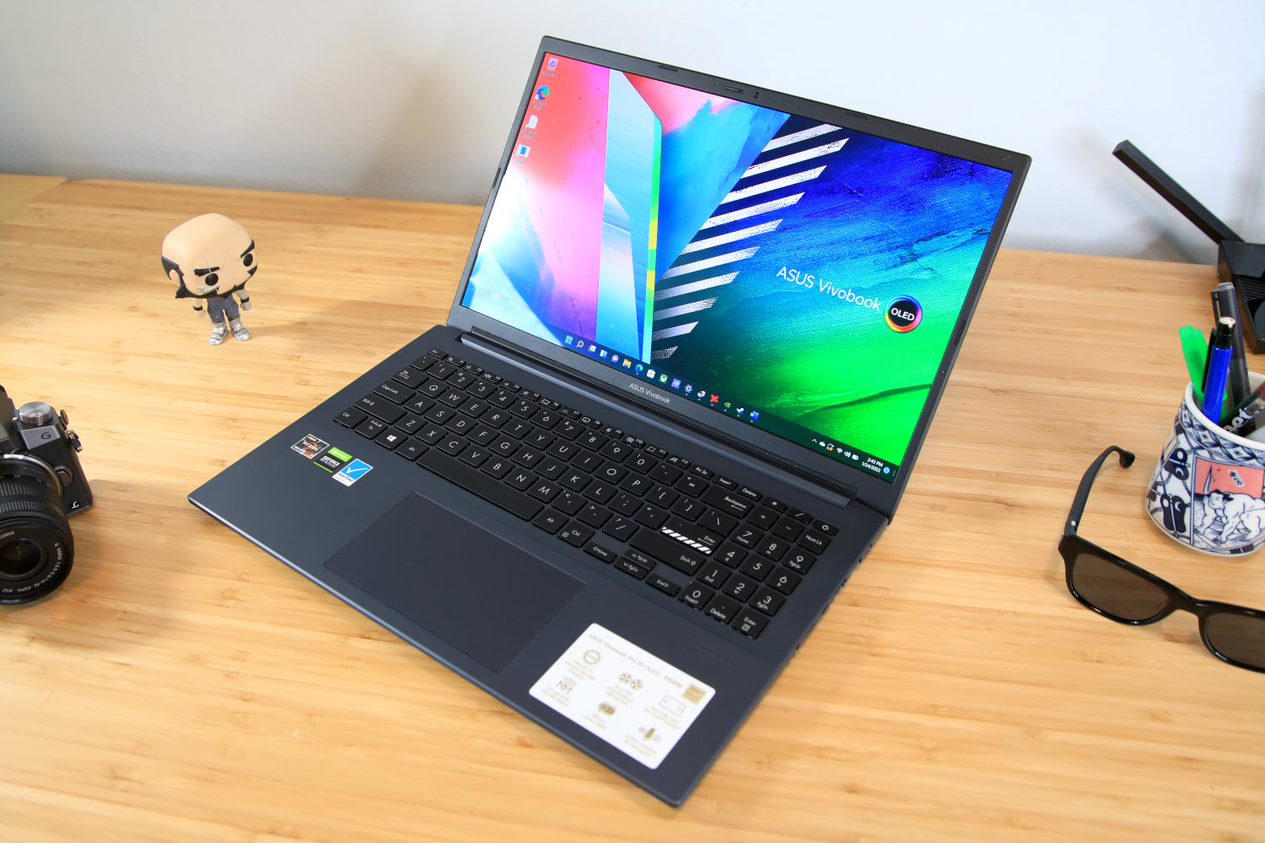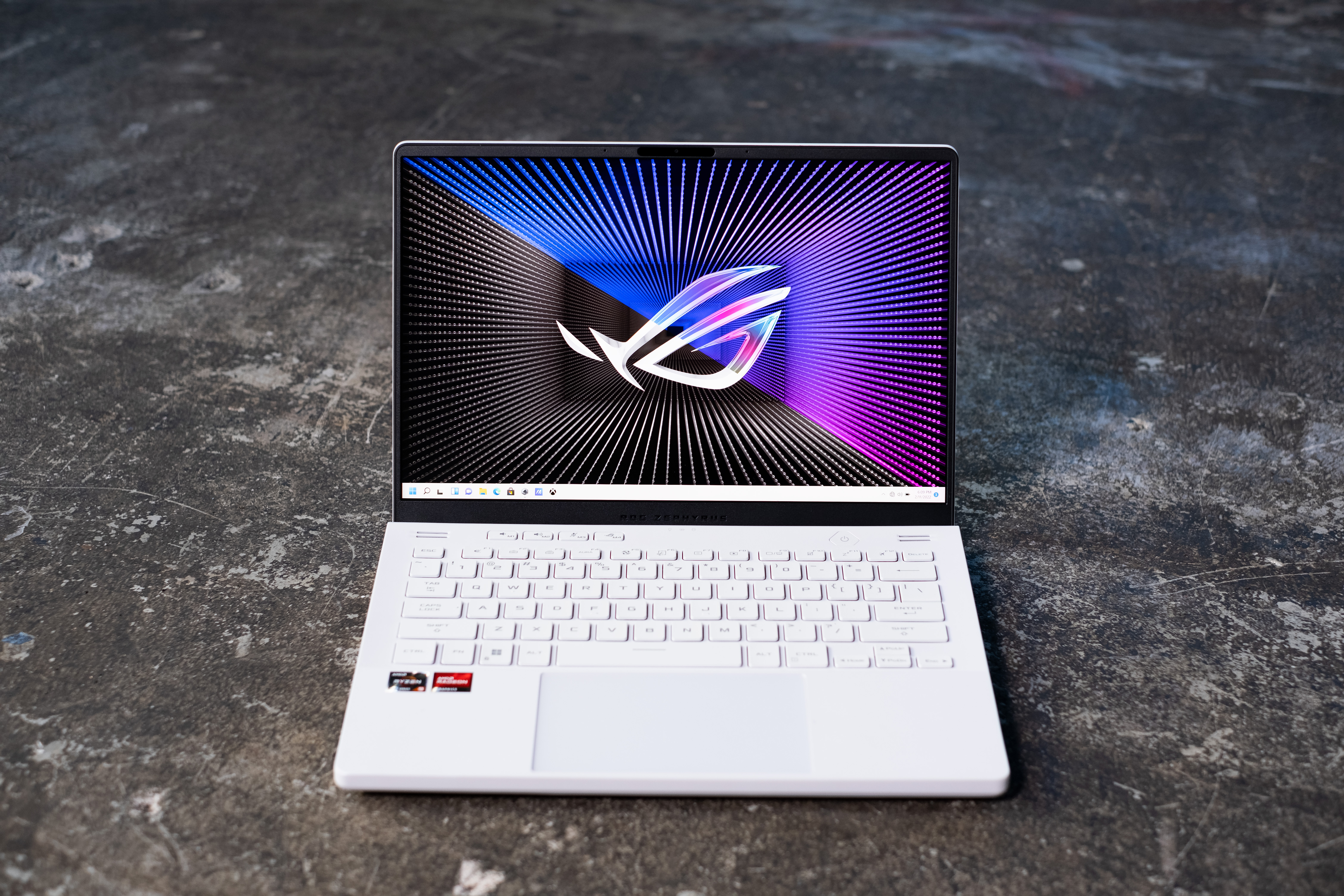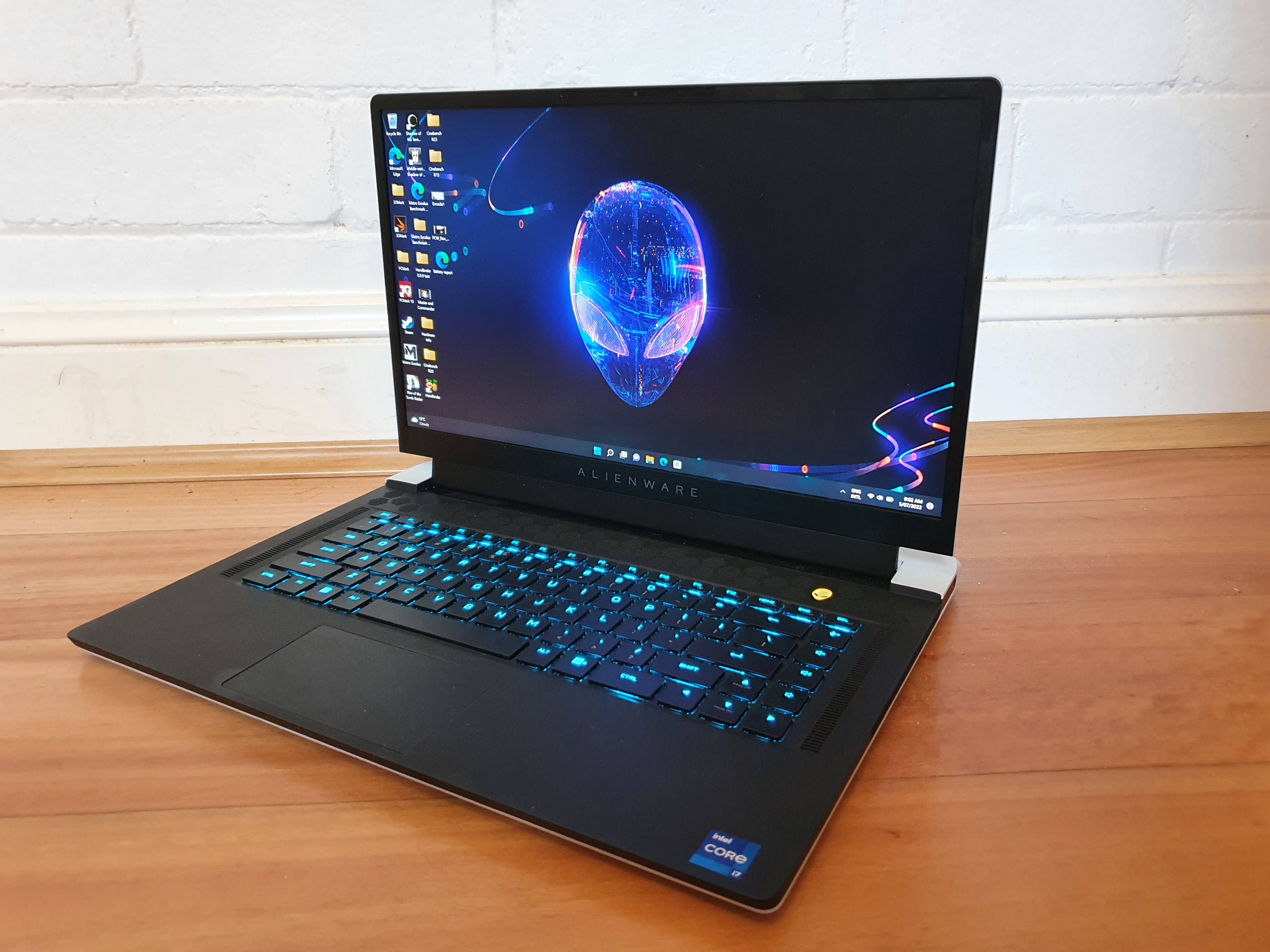There’s no better time to buy a laptop now that we’re in the midst of back-to-school season. However, if you’re a student that’s serious about gaming, you’re going to need a laptop that’s powerful enough for late-night gaming sessions as well as schoolwork. You won’t find any low-powered Chromebooks here. If you’re not sure where to begin your search, don’t sweat it. That’s where we come in. We went ahead and carefully curated a list of the best gaming laptops for students. We’ve taken everything from display quality and budget into consideration. Read on to learn more.
[Need something strictly for schoolwork? Check out our picks for the best laptops for college students]
Lenovo Legion 5 Pro (2022) – Best overall

Pros
-
Attractive, durable design
-
Pleasant keyboard and touchpad
-
Plenty of wired and wireless connectivity
-
Excellent game performance
-
Competitive pricing
Cons
-
Processor performance is midpack
-
The display is bright, but lacking in color performance
-
Speakers can sound muddy
The Lenovo Legion 5 Pro ticks off a lot of boxes. It offers fantastic gaming performance, a wide range of connectivity options, a rugged design, and so much more. The pricing is competitive, too. This machine is more than capable and the best bang for your buck.
The Legion 5 Pro has an Intel Core i7-12700H CPU, an Nvidia GeForce RTX 3070 Ti GPU, 16GB of RAM, and 512GB of SSD storage. According to our tester, the laptop “screamed at 148 frames-per-second” during the Rise of the Tomb Raider benchmark The non-touch IPS display has a resolution of 2560×1600 and a maximum refresh rate of 165Hz. The display is also bright, but it’s not as colorful as others we’ve seen. Overall, we feel the pros far outweigh the cons here.
Read our full Lenovo Legion 5 Pro (2022) review
Asus VivoBook Pro 15 OLED Ultra Slim Laptop – Best budget option

Pros
-
Good productivity performance
-
Superb display
-
Rugged design
-
Great battery life
Cons
-
Boring aesthetics
-
An impressive 720p webcam
-
Unreliable fingerprint scanner
-
Poor port selection
If you’re looking for strong gaming performance at an affordable price, the Asus VivoBook Pro 15 OLED is a fantastic choice. According to our tester, this laptop can easily handle “gaming, streaming, and day-to-day productivity.” It has an AMD Ryzen 7 5800H CPU, an Nvidia GeForce RTX 3050 GPU, 16GB of RAM, and 512GB of NVMe PCIe SSD storage. You may need to drop down to medium or high graphics when playing newer AAA titles. That said, this machine should be able to run older games just fine. The OLED panel is also superb and battery life is great. In fact, it lasted over 11 hours on a single charge during our battery-life benchmark. That’s impressive for a gaming laptop. There are a few minor nitpicks to be aware of, though.
The fingerprint scanner is downright finicky and the overall aesthetic is uninspiring. The port selection isn’t too different, either. If you can live with those caveats, the VivoBook Pro 15 OLED is an absolute joy to use and well worth considering. If you’re interested in more budget gaming laptop recommendations, be sure to check out our picks for the best gaming laptops under $1,500 and the best gaming laptops under $1,000.
Read our full ASUS VivoBook Pro 15 OLED Ultra Slim Laptop review
Asus ROG Zephyrus G14 – Most portable

Pros
-
Powerful CPU and GPU performance in a very compact design
-
AniMe Matrix screams unique
-
It has a webcam
Cons
-
Half permanent RAM
-
Keyboard backlighting is subpar
The ROG Zephyrus G14 is lightweight and powerful, a rare combination when it comes to gaming laptops. It weighs just a little over three pounds. Compared to most gaming laptops, which tip the scales at five or six pounds, the G14 is featherlight. As for internals, it features an AMD Ryzen 9 6900HS CPU and an AMD Radeon RX6800S GPU. In other words, you can expect strong gaming performance. The only real knock is the keyboard, which feels too mushy. The backlighting is unimpressive, too. However, if you’re jonesing for a portable gaming laptop that promises zippy performance, the Zephyrus G14 is an awesome pick.
HP Diet 16 (16-d0097nr) – Best keyboard

Pros
-
Very good value
-
Surprisingly comfortable keyboard
-
Large 16-inch 1080p screen with a high 144Hz refresh rate
Cons
-
Budget RTX GPU
-
The audio doesn’t feel quite right
-
The display hinge is a bit flimsy
The HP Diet 16 has a really comfortable keyboard, which is great for schoolwork because of longer typing sessions. According to our tester, he was “happy to use the keyboard on a long-term basis.” HP put a number pad in there as well, which is perfect for gamers. But how does it perform? Well, let’s get into the guts then.
This laptop should be able to run most older games on medium to high graphics, as well as everyday tasks like writing papers, browsing the web, and so on. It features an Intel Core i7-11800H CPU, an Nvidia GeForce RTX 3060 GPU, 16GB of RAM, and 512GB of PCIe NVMe SSD storage. The 16.1-inch display has a resolution of 1920×1080 and a refresh rate of 144Hz. The display hinge is a little flimsy though, so you’ll want to be mindful when handling it.
We didn’t have many knocks against this laptop, but the design is anything but a head-turner, that’s for sure. If you can live with the ho-hum design, the Victus 16 is a solid choice, especially if you’re on a tight budget.
Read our full HP Diet 16 (16-d0097nr) review
Alienware x15 R2 – Best high-end option

Pros
-
Ample power for gaming performance
-
Smooth and gorgeous QHD display
-
Stunning otherworldly design with RGB lighting
Cons
-
Rear-oriented ports can be hard-to-reach
-
Middling battery life unplugged
-
RAM comes soldered onto the motherboard
If you want the cream of the crop, the Alienware x15 R2 is the one to pick. It’s rocking an Intel Core i7-12700H CPU, an Nvidia GeForce RTX 3080 Ti GPU, 32GB of RAM, and 1TB of PCIe NVMe SSD storage. The 15.6-inch display has a resolution of 2560×1440 and a maximum refresh rate of 240Hz. wow Just wow. It has some quirks, though. The rear ports are difficult to reach and the RAM is soldered on. That said, the features really dominate any drawbacks.
If you’re in a position to shell out the cash, the Alienware x15 R2 will surely deliver an out-of-this-world experience.
Read our full Alienware x15 R2 review
How we tested
The PCWorld team puts every Windows laptop through a series of intense benchmarks that test GPU and CPU performance, battery life, and so on. The idea is to push the laptop to its limits and then compare it against others we’ve tested. Below, you’ll find a breakdown of each test and the reasons why we run them.
Windows laptops
- PCMark 10: The PCMark 10 benchmark is how we determine how well the laptop handles general use tasks like web browsing, word processing, spreadsheets, streaming, and so on.
- HandBrake: HandBrake is more intensive than PCMark 10. It measures how long a laptop’s CPU takes to encode a beefy 30GB file.
- Cinebench: Cinebench is a brief stress test of the CPU cores. It renders a 2D scene over a short period of time.
- 3DMark: 3DMark checks if 3D performance remains consistent over time by running graphic-intensive clips. This is how we test a gaming laptop’s GPU.
- Video rundown test: To gauge battery life, we loop a 4K video using Windows 10’s Movies & TV app until the laptop dies.
Gaming laptops for students FAQ
When it comes to selecting the right laptop, it really depends on what you plan to do with it. Are you going to play lightweight titles like Minecraft or something more visually demanding like Cyberpunk 2077? Are you going to use the machine for schoolwork as well? If so, gaming laptops are a great choice, especially for video rendering or graphic design work. Fortunately, you don’t need a powerful GPU for something like this Fortnite or Stardew Valley. The guts, my friends. That’s what matters. Below you’ll find a simple breakdown on what you should look for.
How much graphics power will I need?
The GPU is important because it’s the component that determines how smoothly your machine handles games. Fortunately, you don’t need the best graphics card to get reliable graphics performance, which is good news if you’re on a tight budget. If you’re looking to save some cash, go for the GTX 1650. It’s an entry-level GPU that’s powerful enough for 1080p gaming on mid-to-high graphics. If you need more oomph and higher frame rates, we’d suggest shooting for a GTX 1660 Ti or higher, or a more current RTX 30-series GPU.
What about processing power?
For Intel processors, aim for a 12th-gen Intel Core i5 or i7. For AMD, go with a Ryzen 4000 or 5000. A processor with four cores is good, but six cores or more is better. More cores helps your machine divvy up the workload.
Are memory and storage options important?
Absolutely! 8GB of RAM is the bare minimum I’d recommend, but if you can afford it, go for 16GB instead. This will help overall browser performance, which is important when you’re doing schoolwork. Memory is typically upgradeable, so you can always swap it out and add more later on.
Storage directly impacts how many games you can install on your computer. You should get at least 512GB of SSD storage plus a hard drive, as newer titles tend to eat up a ton of space. SSDs load games faster because the data is stored on chips rather than a spinning disk. Plus, SSDs are quieter and more power efficient. You’ll also need the space to store homework and so on.
Should I invest in a top-quality display?
Don’t go for anything below 1080p. If the picture isn’t sharp enough or is too dim, you can always pick up an external monitor to plug into. For those who suffer from tension headaches due to eye strain (hi!), 4K is the way to go. That said, 4K displays are expensive because they have higher refresh rates and faster response times.
How long should my laptop last on a single charge?
Generally speaking, most gaming laptops have bad battery life. That’s because they’re power-hungry machines. It’s a lot of work running an AAA title on ultra graphics, you know? Depending on your use, most gaming laptops will last anywhere from four to six hours on a single charge. However, if you limit your use to schoolwork only, you may be able to squeeze out another hour or two.